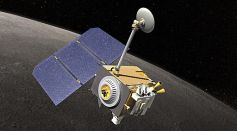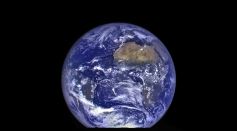Tags: Lunar Reconnaissance Orbiter
NASA's Lunar Reconnaissance Orbiter Captures Images of Crashed Russian Moon Lander

Lunar Reconnaissance Orbiter Which Has Been Providing Views of Moon for 14 Years Is Reaching the End of Its Lifetime

Japanese Moon Lander's Impact Site Found: NASA Lunar Orbiter Spotted Hakuto-R's Debris a Day After Its Failed Touchdown

NASA Lunar Reconnaissance Orbiter Spots the Most Comfortable Place on the Moon; Will It Be Habitable Like Earth?

NASA Lunar Reconnaissance Orbiter Shares Stunning Photo of Saturn [LOOK]

After 50 Years, Earth Receives Laser Signals From the Moon
NASA Spacecraft Now Closer to the Moon Than Ever Before
What Lies On the 'Dark Side' of the Moon?
Thanks To Lunar Reconnaissance Orbiter NASA Reveals What Lies on the Dark Side of the Moon
Most Popular

Ocean Acidification, Marine pH Change, and CO2 Absorption: How Coral Reef Damage and Shellfish and Plankton Impacts Threaten Marine Life

Solar Storm Risks: How Geomagnetic Storms Threaten Earth's Power Grids and Satellites

Dark Matter Explained: What We Know, What We Don't, and How It Shapes Cosmic Structure

Memory and Learning: How the Brain Stores, Retrieves, and Forgets Information





